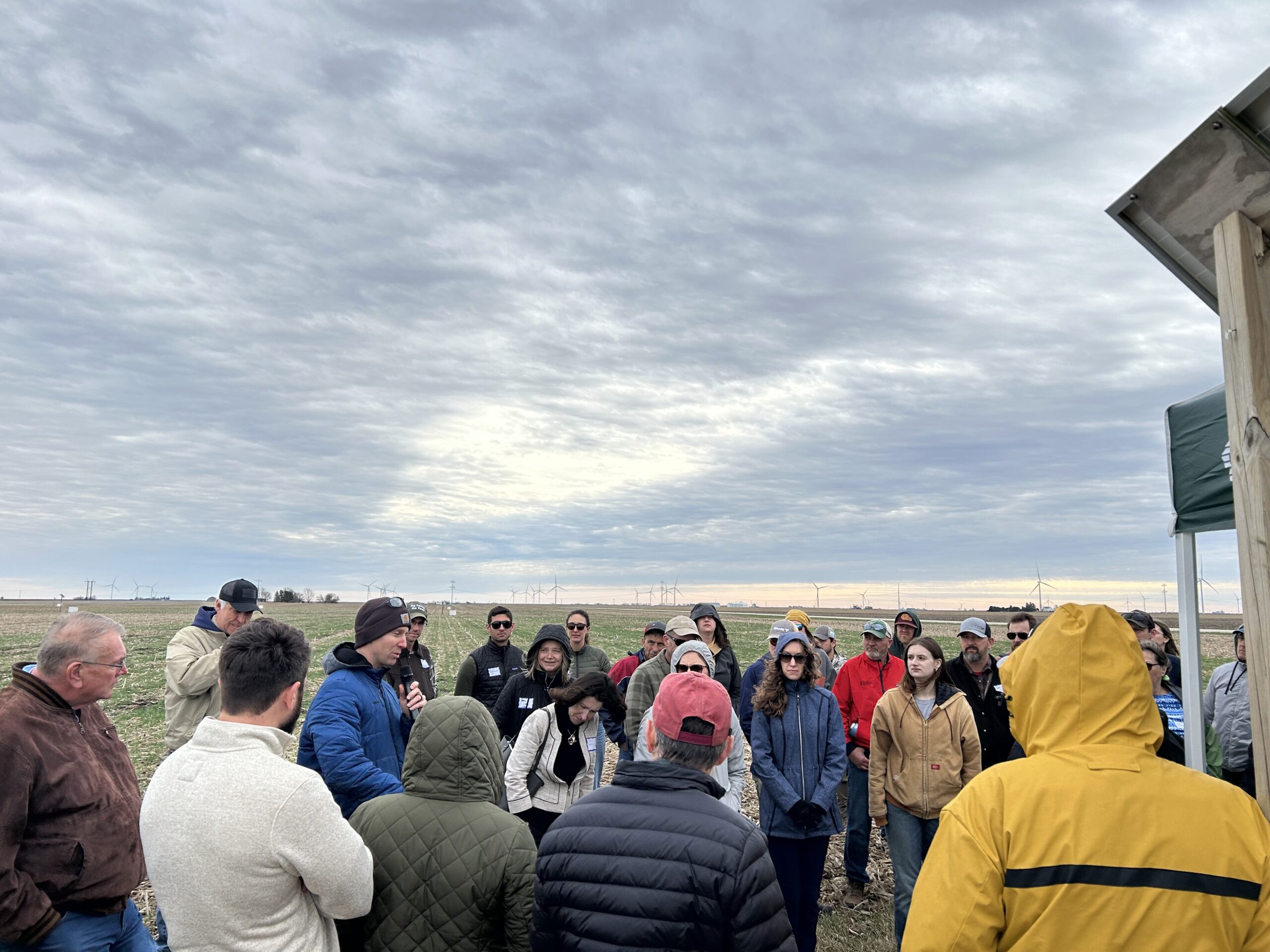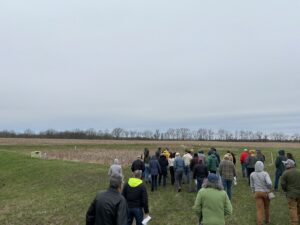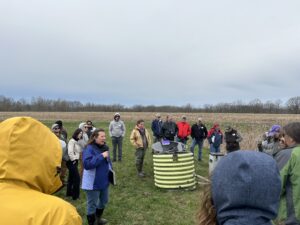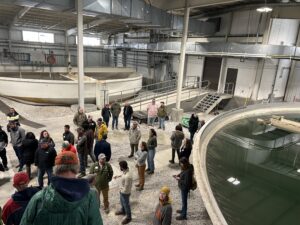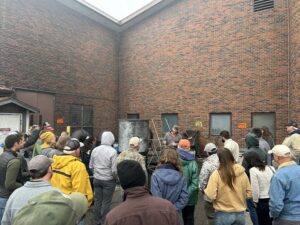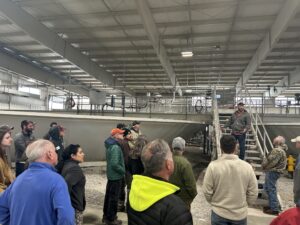By Chloe Chiles Troutman
On April 3rd, Illinois farmers, agriculture professionals, water treatment experts, and the newly elected Mayor of Bloomington came together bright and early at Davis Lodge in Hudson, IL, for a day-long event entitled “From Farm to Filtration: A Tour of Conservation in Action.” The event was hosted by Illinois Sustainable Ag Partnership (ISAP), Illinois Nutrient Research and Education Council (NREC), and the McLean Soil and Water Conservation District.
The morning started with a networking session over coffee and donuts for those with a shared interest in water quality and conservation practices to get to know each other. Following these coffee chats, participants traveled to Phillip Brown’s farm in Lexington Illinois where Dr. Shalamar Armstrong has been doing research since 2015. Dr. Armstrong, an Associate Professor at Purdue University, along with Michael Ruffatti, crop and soil science researcher at Illinois State University, and Phillip Brown described their 10-year long research project exploring the impact of cereal rye, red clover, and varying levels of nutrient management on nitrogen levels in the soil and waterways. Phillip shared insights on how cover crops initially affected his crop yield, noting an initial decrease of about 13%. In the past year, however, he’s almost reached pre-cover crop yields while keeping nitrogen levels in the groundwater low. Dr. Armstrong reminded the group that no one year is the same in agriculture, so nitrogen and phosphorous levels may vary from season to season. Dr. Armstrong remains confident that long-term results will show a decrease in nutrient loss and an increase in crop yields.
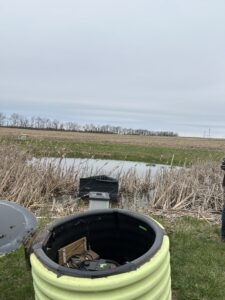 After this thorough introduction to nutrient loss and water quality research, the group headed to the Franklin Research and Demonstration Farm, a wetlands research project of The Nature Conservancy. Participants were initially greeted by Nature Conservancy staff as well as a member of the Franklin family and the farm tenant. The Franklin Farm has three constructed wetland complexes that were built in 2005 to hold and treat tile drainage water. Plants and bacteria that grow within the wetlands assist in the uptake and breakdown of nitrate-nitrogen, which reduces the amount running off into nearby streams. This naturally treated water eventually flows into floodplain wetlands near Turkey Creek, which then flows to the Mackinaw River. Water samples are collected every week throughout the year (or more frequently during storm events) and either analyzed for nutrients within 48 hours or frozen for future analysis.
After this thorough introduction to nutrient loss and water quality research, the group headed to the Franklin Research and Demonstration Farm, a wetlands research project of The Nature Conservancy. Participants were initially greeted by Nature Conservancy staff as well as a member of the Franklin family and the farm tenant. The Franklin Farm has three constructed wetland complexes that were built in 2005 to hold and treat tile drainage water. Plants and bacteria that grow within the wetlands assist in the uptake and breakdown of nitrate-nitrogen, which reduces the amount running off into nearby streams. This naturally treated water eventually flows into floodplain wetlands near Turkey Creek, which then flows to the Mackinaw River. Water samples are collected every week throughout the year (or more frequently during storm events) and either analyzed for nutrients within 48 hours or frozen for future analysis.
About 15 years of data show that a wetland representing just 3% of the drainage area reduces nitrate-nitrogen levels 15-38% and dissolved phosphorus 53-81%. Wetlands representing 9% of the drainage area reduced nitrate-nitrogen levels 49-57% and dissolved phosphorus 32-95%. The farm also employs other conservation practices such as strip-till, cover-crops, and grassed waterways.
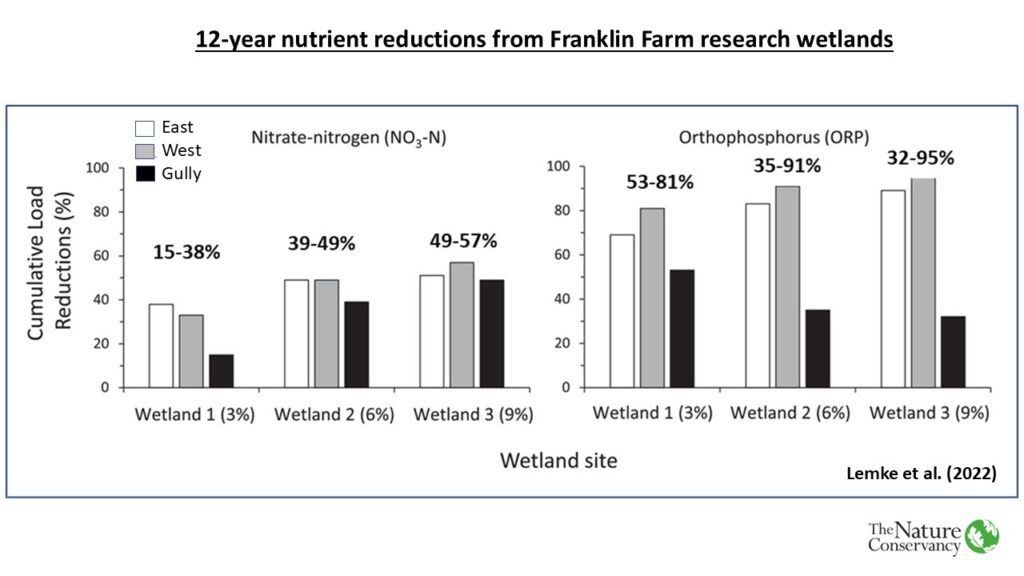
Lemke et al. 2022. JEQ, 1-14

Next, the group toured the Bloomington Water Treatment Plant. In 2022, Bloomington City Council approved roughly $1.5 million to upgrade the chemical systems of the plant. Joe Darter, property manager for the City of Bloomington Water Department, led participants through the water treatment process, starting with a display of the powdered activated carbon (PAC) used to subdue the odor and taste of the water. The water is filtered for any physical objects through a series of grates and filtration systems. It is then treated with chlorine and several other chemicals to remove any toxins and turbidity, before again being exposed to PAC to ensure suitable smelling and tasting water. The group got to see these treatment techniques in action by touring chlorine treatment rooms with large concrete structures, a room for lime softening, and a room with large vats of water where PAC filtration takes place.
In the afternoon, attendees returned to Davis Lodge to enjoy a lunch catered by Annie’s Eats, based out of Bloomington. Farmers, agricultural professionals, and water treatment specialists were able to exchange their thoughts on the events of the day after brief presentations from Julie Hewitt (NREC), Rabin Bhattarai (University of Illinois), and Alan Hertzberger (Natural Resources Conservation Service).
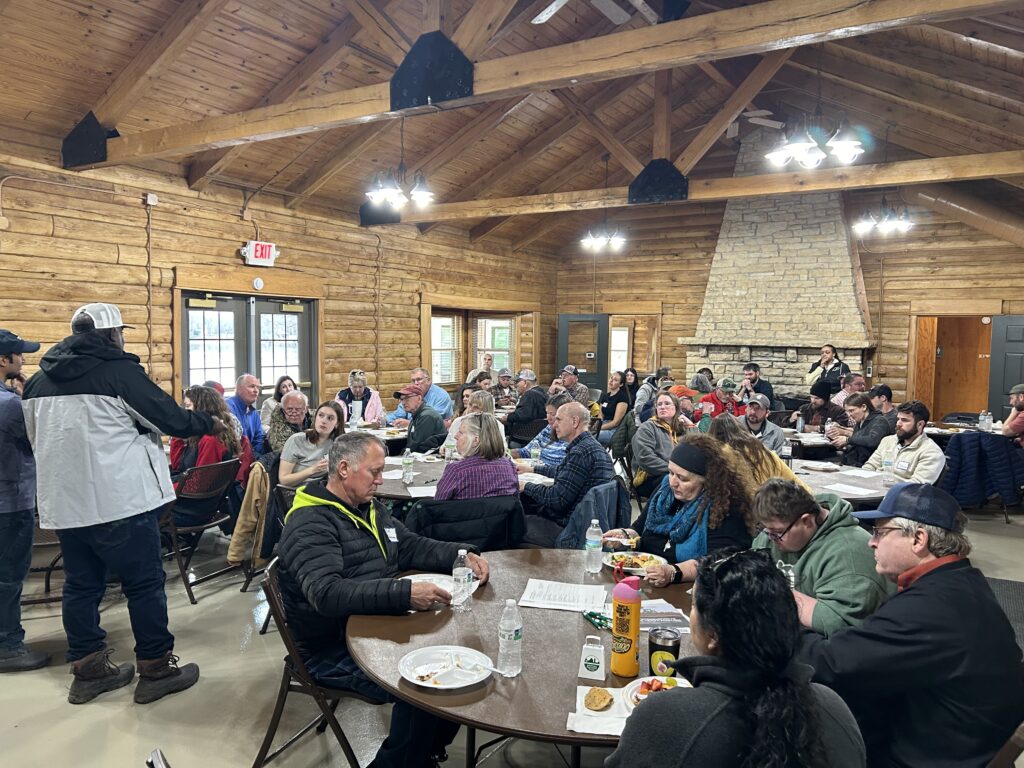
To stay up to date on future ISAP field days, trainings, and events, sign up for our monthly newsletter, The Aggregate.
